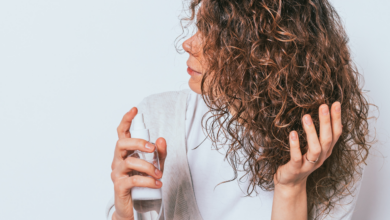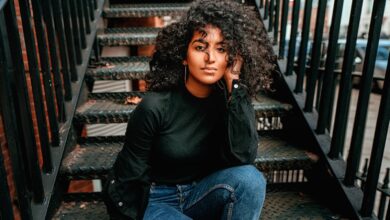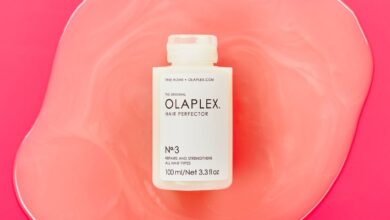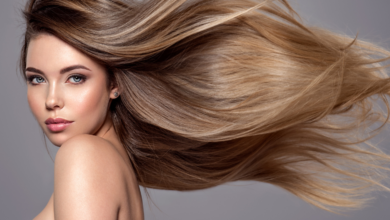
If you’ve ever wanted to achieve those effortlessly sun-kissed hair highlights, then look no further than “Balayage Basics: The Art Of Natural-Looking Hair Highlighting.” This comprehensive guide will equip you with the essential techniques and knowledge to master the art of balayage, the hair coloring trend that’s been taking the world by storm. With step-by-step instructions, in-depth tips, and stunning visuals, this product will empower you to create beautiful, natural-looking highlights that seamlessly blend with your hair, transforming your look and boosting your confidence. Say goodbye to harsh, uniform hair coloring techniques, and say hello to the captivating allure of balayage.

What is Balayage?
Balayage is a hair highlighting technique that originated in France. The word “balayage” actually means “sweeping” in French, and this technique involves sweeping or painting the hair with lightener to create natural and sun-kissed highlights. Unlike traditional foil highlights, balayage creates a softer and more blended look, resulting in a natural and subtle gradient effect.
History of Balayage
The balayage technique was first developed in the 1970s by a French hair colorist named Jacky Machet. He wanted to create a highlighting method that looked more natural and less uniform than the traditional foil technique. Balayage quickly gained popularity in Europe and eventually made its way to the United States in the early 2000s. It has since become a beloved hair coloring technique and is favored by many celebrities and trendsetters.
Benefits of Balayage
Natural and Subtle Look
One of the biggest advantages of balayage is its ability to create a natural and subtle look. The hand-painted technique allows for customized highlights that blend seamlessly with your natural hair color. The result is a soft and sun-kissed effect that mimics the natural highlights you would get from spending time in the sun.
Low Maintenance
Another major benefit of balayage is its low maintenance nature. Since the highlights are blended so seamlessly into your hair, there is no harsh line of demarcation as your roots grow out. This means you can go longer between touch-up appointments, saving you time and money in the long run.

Versatility
Balayage is an incredibly versatile hair coloring technique. It can be applied to any hair length, texture, or color. Whether you have short hair, long hair, curly hair, or straight hair, balayage can be customized to suit your individual style and preferences. The versatility of balayage also makes it a great option for those looking to experiment with different hair colors without committing to a full head of color.
Suitable for All Hair Types
Unlike other highlighting techniques that may require certain hair types, balayage can be done on all hair textures and types. Whether you have fine hair, thick hair, or somewhere in between, balayage can be tailored to enhance the natural beauty of your locks. It is important, however, to consult with a professional colorist to determine the best balayage technique for your specific hair type.
Choosing the Right Balayage Technique
With so many different balayage techniques available, it can be overwhelming to choose the right one for you. Below are some popular balayage techniques to consider:
Traditional Balayage
The traditional balayage technique involves the hair colorist freehand painting the lightener onto the hair in a sweeping motion. This technique creates soft and natural-looking highlights that blend seamlessly into the hair.
Foilyage
Foilyage is a hybrid technique that combines balayage and foiling. It involves painting the hair with lightener and then wrapping sections of the hair in foils to intensify the lightening effect. Foilyage is a great option for those who want a more dramatic and defined balayage look.

Micro Balayage
Micro balayage focuses on creating very fine and delicate highlights throughout the hair. This technique is perfect for those who want a more subtle and understated balayage look.
Color Melting
Color melting combines balayage with traditional hair coloring techniques, such as ombre or root smudging. This technique creates a seamless blend of colors, resulting in a soft and multidimensional look.
Ombre Balayage
Ombre balayage involves transitioning from a darker shade at the roots to a lighter shade towards the ends of the hair. This technique creates a beautiful gradient effect and is a popular choice for those looking to add depth and dimension to their hair.
When choosing the right balayage technique, it is important to consider your hair type, natural color, and desired outcome. Consulting with a professional colorist is essential to determine the best technique for you.

Preparation for Balayage
Before getting balayage, there are several important steps to take in order to ensure optimal results:
Consultation with a Professional
Scheduling a consultation with a professional colorist is crucial before getting balayage. During this conversation, you can discuss your hair goals, preferences, and any concerns you may have. The colorist will assess your hair type and condition to determine which balayage technique would work best for you.
Hair Conditioning
Before undergoing a balayage treatment, it is important to ensure that your hair is healthy and well-conditioned. This involves using deep conditioning treatments and minimizing the use of heat tools in the weeks leading up to your appointment. Healthy hair will better absorb the lightener and result in more vibrant and long-lasting color.
Color Analysis
During the consultation, your colorist will also perform a color analysis to determine which shades will complement your skin tone and natural hair color. They will take into consideration factors such as your eye color and complexion to create a customized balayage look that enhances your features.
Hair Strand Test
A hair strand test is often conducted before the balayage appointment to assess how your hair will react to the lightener. This test involves applying a small amount of lightener to a strand of hair and monitoring the results. It helps to determine the processing time needed and ensures that your hair will not be damaged during the balayage process.
Balayage Application Process
Once you have gone through the preparation steps, it is time for the balayage application process:
Sectioning the Hair
The first step in the balayage application process is sectioning the hair. This ensures that the lightener is applied evenly throughout the hair. The colorist will divide the hair into smaller sections, typically using clips or hair ties.
Applying the Lightener
After sectioning the hair, the colorist will begin applying the lightener. Using a brush, they will paint the lightener onto the hair in a sweeping motion, focusing on the mid-lengths and ends. The lightener is applied in varying strengths, depending on the desired outcome.
Blending and Feathering
To create a seamless blend between the natural hair color and the highlights, the colorist will use feathering techniques. This involves using a brush or a comb to gently blend the lightener into the hair, creating a soft transition.
Processing Time
The processing time for balayage varies depending on factors such as your natural hair color, desired level of lightness, and the condition of your hair. It typically ranges from 30 minutes to an hour, during which the lightener is left to develop and lighten the hair.
Toning (Optional)
After the lightener has been rinsed out, some colorists may choose to apply a toner to achieve the desired shade. Toning helps to neutralize any unwanted tones and create a more cohesive and balanced color result.

Balayage Aftercare
To maintain the vibrancy and longevity of your balayage, it is important to follow a proper aftercare routine:
Using Color-Safe Shampoo
Using a color-safe shampoo is essential to prevent fading and maintain the integrity of your balayage. Look for shampoos specifically designed for color-treated hair, as they are formulated to be gentle and non-stripping.
Conditioning and Moisturizing
Balayage can sometimes result in dryness and damage, so it is important to use a conditioner or hair mask regularly to keep your locks hydrated and nourished. Deep conditioning treatments can also help to restore any lost moisture and keep your hair looking healthy and shiny.
Limiting Heat Styling
Excessive heat styling can cause damage and fade the color of your balayage. To minimize this, try to limit the use of heat tools such as flat irons, curling irons, and blow dryers. When heat styling is necessary, always use a heat protectant spray to minimize damage.
Protecting from UV Damage
The sun’s UV rays can cause the color of your balayage to fade and become brassy. To protect your hair from UV damage, consider using UV protection sprays or wearing a hat when spending prolonged periods in the sun.

Regular Touch-ups
To keep your balayage looking fresh and vibrant, it is recommended to schedule regular touch-up appointments. The frequency of touch-ups depends on how fast your hair grows and how much contrast you prefer between your natural color and the highlights. On average, touch-ups are done every 8 to 12 weeks.
Maintaining and Refreshing Balayage
To maintain the beauty of your balayage and keep it looking fresh, consider the following tips:
Color Retention Tips
To retain the color of your balayage, try to avoid excessive exposure to chlorine, saltwater, and harsh chemicals. These can strip away the color and cause it to fade. Additionally, using a leave-in conditioner or hair oil can help to protect your strands and lock in moisture.
Color Refreshing Techniques
As your balayage grows out, it may become less vibrant or lose its desired tone. There are several techniques that can be used to refresh and revive your color. This includes adding subtle highlights, toning the existing color, or even creating a darker root smudge for a more seamless transition.
Avoiding Common Mistakes
To prevent any mishaps or damage to your balayage, avoid using box dyes or attempting to color your hair at home. These can lead to uneven results and potentially harm your hair. Trusting a professional colorist with experience in balayage techniques is key to achieving the best outcome.
When to Seek Professional Help
If you are experiencing any issues with your balayage, such as excessive fading, uneven color, or damage, it is important to seek professional help. A skilled colorist can assess the situation and provide the necessary treatments or adjustments to restore your balayage to its former glory.

Frequently Asked Questions (FAQs)
How long does Balayage last?
Balayage is known for its low-maintenance nature, and the color typically lasts between 8 to 12 weeks. However, this can vary depending on factors such as your natural hair color, the technique used, and how well you take care of your hair.
Can Balayage be done on naturally dark hair?
Yes, balayage can be done on naturally dark hair. In fact, it is a popular choice for adding dimension and depth to darker hair colors. The balayage technique allows for a natural and subtle look, even on dark hair.
Is Balayage suitable for short hairstyles?
Absolutely! Balayage can be customized to suit all hair lengths, including short hairstyles. Whether you have a pixie cut, a bob, or a lob, balayage can add dimension and create a more dynamic look.
Can I do Balayage at home?
While it is possible to attempt balayage at home, it is highly recommended to seek professional help. Balayage requires a certain level of skill and technique to achieve the desired results. A professional colorist will have the expertise and knowledge to create a customized balayage look that suits your hair type and goals.
How often should I get Balayage touch-ups?
The frequency of balayage touch-ups depends on your hair growth and personal preference. On average, touch-ups are done every 8 to 12 weeks. However, some individuals may choose to wait longer between appointments to achieve a more lived-in and natural look.
Different Looks with Balayage
Balayage can be customized to create a wide range of looks. Here are some popular options:
Sun-Kissed Balayage
Sun-kissed balayage involves adding soft and natural-looking highlights throughout the hair. This creates a beautiful and radiant effect, as if your hair has been naturally lightened by the sun.
Beachy Waves Balayage
Beachy waves balayage is perfect for those who want a more textured and effortless look. This technique involves adding highlights to the mid-lengths and ends of the hair, creating a sun-drenched and beach-ready appearance.
Face-Framing Balayage
Face-framing balayage focuses on adding highlights around the face to enhance your features and create a beautiful frame. This technique can be personalized to suit different skin tones and face shapes.
Honey Blonde Balayage
Honey blonde balayage is a warm and vibrant option for those looking to add some depth and richness to their hair. This technique involves creating honey-toned highlights that blend seamlessly with the natural hair color.
Platinum Balayage
Platinum balayage is a striking and bold choice for those who want to make a statement. This technique involves lightening the hair to a platinum blonde shade, creating a high-contrast and impactful look.
Balayage is a versatile and customizable hair coloring technique that can enhance your natural beauty and add dimension to your locks. Whether you prefer a subtle and natural look or a more dramatic and bold appearance, there is a balayage technique that is perfect for you. By consulting with a professional colorist and following the proper aftercare routine, you can enjoy the beauty of balayage for weeks to come. So, embrace the art of natural-looking hair highlighting and let your hair shine with balayage!

Balayage Basics: The Art Of Sun-Kissed Strands(Opens in a new browser tab)
Going Dark: Tips And Tricks For Dyeing Hair Darker Shades(Opens in a new browser tab)
Naturals And Neons: Juxtaposing Classic And Bold Hair Colors(Opens in a new browser tab)




